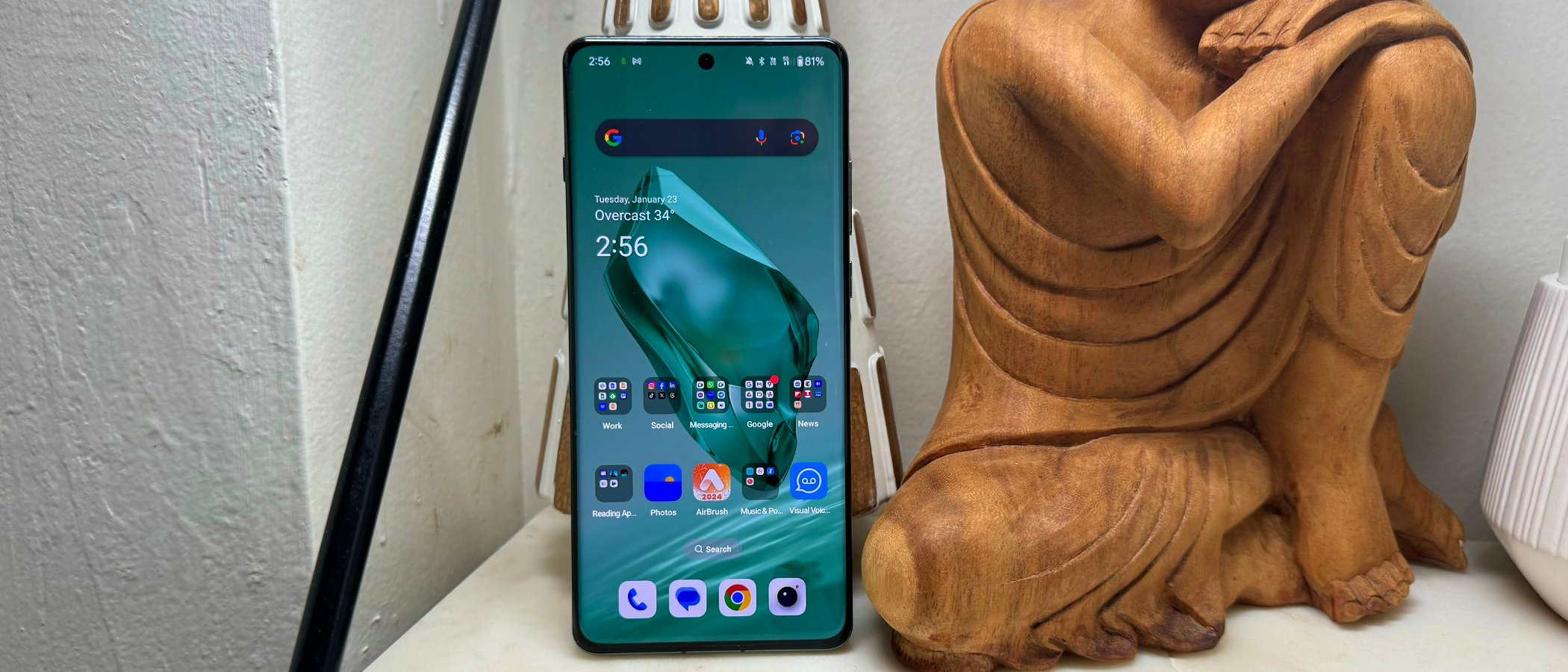
Price: $799 (base); $899 (as reviewed)
OS: OxygenOS 14 (Android 14)
Display: 6.8-inch QHD+ ( 3168 x 1440 QHD+), 510 ppi AMOLED with adaptive 1-120Hz refresh rate, ProXDR Display with LTPO
CPU: Qualcomm Snapdragon 8 Gen 3
RAM: 12GB/16GB
Rear cameras: Sony LYT-808 50MP wide (ƒ/1.6); 48MP ultra-wide (f/2.2 114 degrees); 64MP (f / 2.6) Periscope Telephoto Camera 6x in sensor zoom up to 120x digital zoom
Front camera: 32MP (f/2.4)
Storage: 256GB / 512GB
Battery: Not tested yet
Size: 6.5 x 3 x 0.36 inches
Weight: 7.8 ounces
If thumbing your nose at the so-called premiere smartphone brands was a sport, OnePlus would be the world champion thumber of noses. Once again, the company has launched a sub-$1,000 flagship device, the OnePlus 12. This time, it is stocked with the same Qualcomm Snapdragon 8 Gen 3 you will find in the Samsung Galaxy S24 Ultra, and with more RAM (16GB vs 12GB), for $400 less! The displays have similar specs (S24 6.8” Dynamic AMOLED 2X, Quad HD+, 120Hz Adaptive Refresh Rate), although OnePlus claims nearly double the brightness.
My first impression is that OnePlus continues to deliver a great flagship experience and performance below the market price of $1,200 to $1,300. The OnePlus 12, like its predecessor, delivers in every way. From build quality, camera performance, and the Oxygen OS skin of Android, it all feels, acts, and performs as a top-of-the-line device should.
The OnePlus 12 further proves that the company motto of “Never Settle” is maturing, and its device belongs in the conversation of the best flagship phones. Thanks to its excellent specs, performance, and design quality, OnePlus continues to creep into the rarified air of Apple and Samsung. Let’s briefly look to see if it will land on our list of best smartphones.
OnePlus 12 price and configurations
The OnePlus 12 comes in a Silky Black and starts at $799 – which includes 12GB of RAM and 256GB of internal storage. Our Emerald Flow colored review unit has 16GB of RAM and 512GB of storage for $899. The upgraded model is also available in Silky Black.
I always wonder how OnePlus gives us so much RAM and storage for less, but whatever magic the company is using, I am all about it.
OnePlus 12 design
The OnePlus 12 has great curb appeal as it looks and feels both luxurious and elegant. Its unibody design is a joy to touch and hold. Its chromed-out stainless steel rear camera reminds me of polishing the chrome on my old Camaro back in the day.
While Samsung moved to a flat display on the Galaxy S24 Ultra, the OnePlus 12 still uses a waterfall Corning Gorilla Glass 5 display that gently cascades over the edge, smoothly meshing with the curved contours of the device's frame. There are no unsightly notches here. The display dominates the near bezel-less front of the phone, with the selfie cam tucked into the upper left corner of the display and the fingerprint reader hidden beneath the panel.
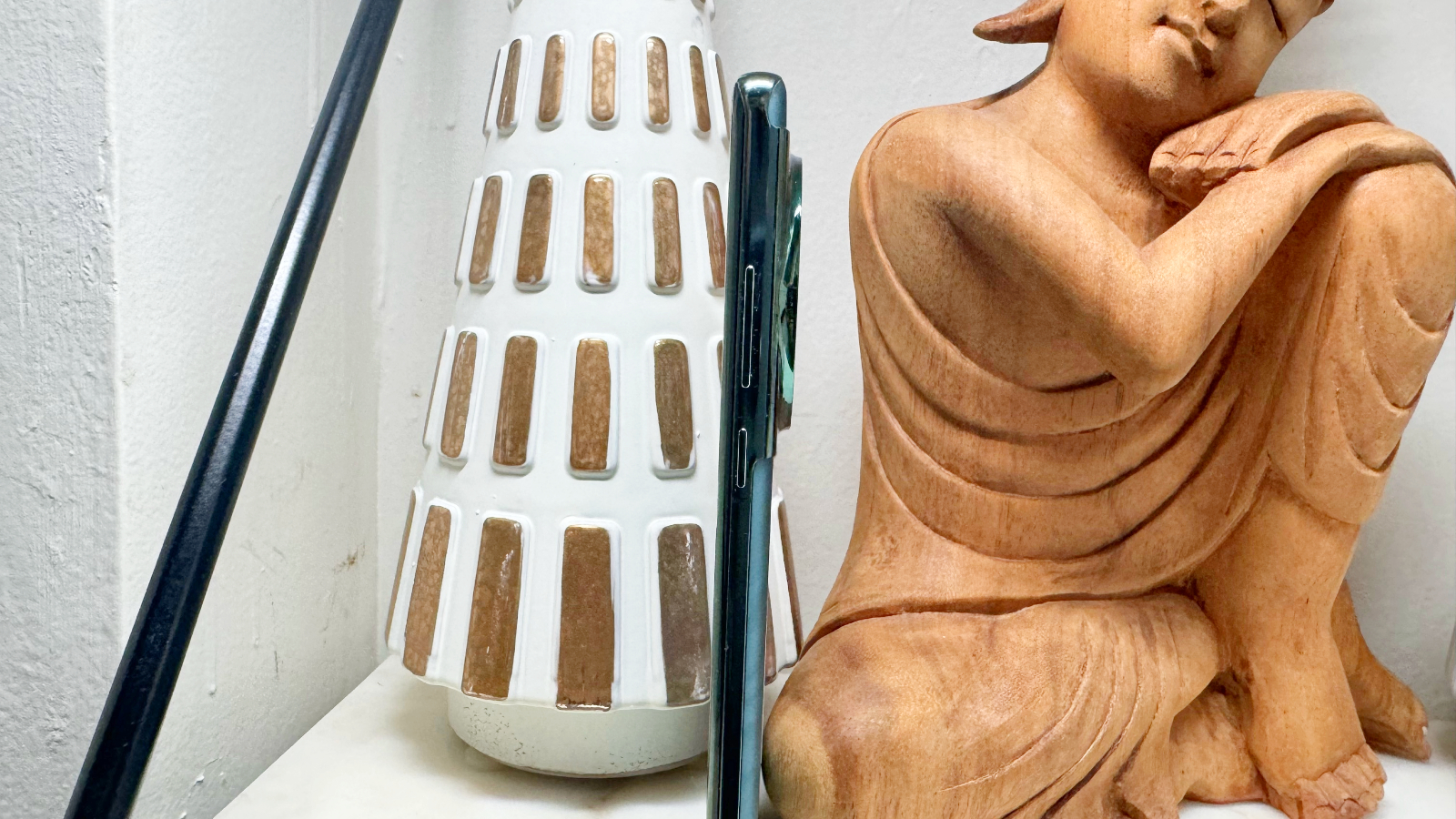
OnePlus’ popular slider once again returns. However, it now resides alone on the upper left side, giving it the distinction it deserves. On the right, we find the volume control buttons and power button. On the bottom the SIM card slot and USB-C charging port. The mic and speaker ports are also seamlessly built into this end of its chromed-out frame. On the rear, we find the camera array — finely melded into the body, which is reminiscent of Samsung’s now abandoned Contour Cut Camera housing.
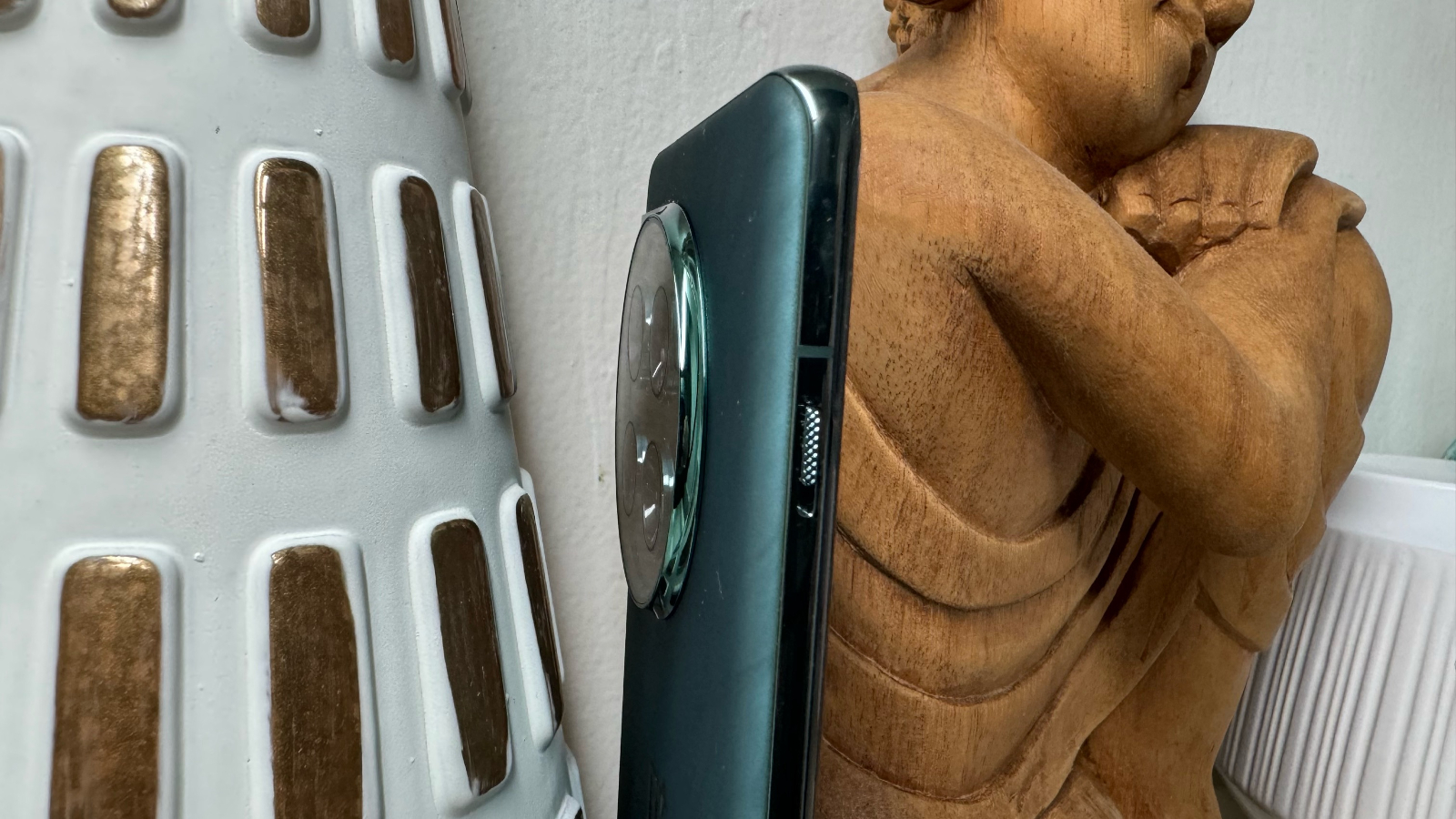
Overall, the design is extremely similar to the OnePlus 11, but with enough subtle changes and improvements that any user will enjoy it. It also feels really good in the hand for a large screened 6.8-inch device.
At 6.5 x 3 x 0.36 inches and 7.8 ounces, the 12’s measurements are just slightly larger in every dimension compared to the OnePlus 11 (6.7 x 2.9 x 0.34 inches, 7.2 ounces).
The 12 has a more ergonomic design and feel than the Pixel 8 Pro (6.40 x 3 x 0.35 in, 7.5 ounces), but it is slightly heavier. The 11 is our comparison group's lightest member, including the recently released Samsung S24 Ultra (6.4 x 3.1 x 0.34 in, 8.2 ounces).
OnePlus 12 display
The OnePlus 12’s 6.8-inch QHD+ AMOLED (3168 x 1440) display is PROXDR certified, Dolby Vision capable, with native support for 10-bit color depth, an adaptive 1Hz - 120Hz refresh rate, and a 19.8:9 aspect ratio. Most importantly, it is crisp, colorful, and great to watch content on.
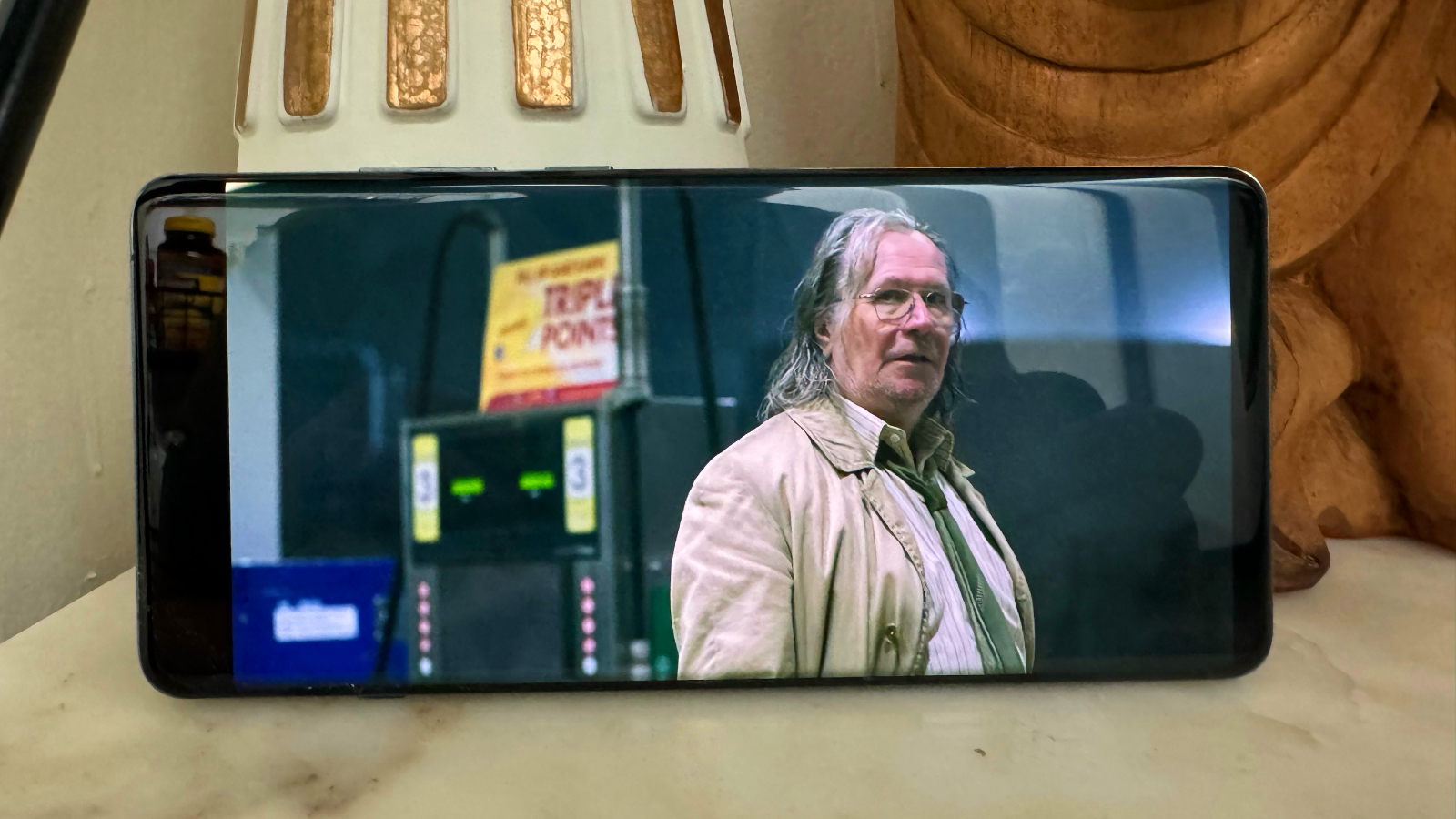
I watched Apple TV’s “Slow Horses” on it, and the OP 12’s display wonderfully reproduced the dingy, darkly colored, and brooding cinematography. While playing “Modern Combat 5,” colors were excellently saturated, the imagery was crisp, and it lived up to its 120Hz refresh rate, with silky smooth rendering during gameplay.
OnePlus 12 audio
The OnePlus 12 comes with 3D Spatial audio from Dolby Atmos, and you’ll immediately notice the excellent sound quality. I wish I knew what magical elves are used to create smartphone speakers, as the speaker performance was louder than expected with excellent tonal separation. It’s not a boombox, but it will more than suffice, and the 3D Spatial audio is a fun and fantastic experience.
I listened to Megan Thee Stallion's “Her” because I love that thumpy house music bassline, and the OP 12 didn’t disappoint, as I danced all over the kitchen. While binge-watching “Slow Horses,” the actor's vocals were crisp, and Mick Jagger’s vocals during the theme song sounded amazingly, hauntingly reproduced as his throaty, haggard voice burst into play. As the Brits say, it really slaps.
OnePlus 12 cameras
I’m a known camera aficionado, and I like the camera array on the 12. With the help of the latest Snapdragon 8 Gen 3 CPU and Hasselblads fine-tuning, the new LYT-808 50MP wide sensor, and quick autofocus, you’re going to love the images you shoot with this camera setup.
I found the images crisp, with excellent color saturation, and the Hasselblad fine-tuning really makes a huge difference, with Master mode giving you a pro-level DSLR experience. I will have sample images in my full review.
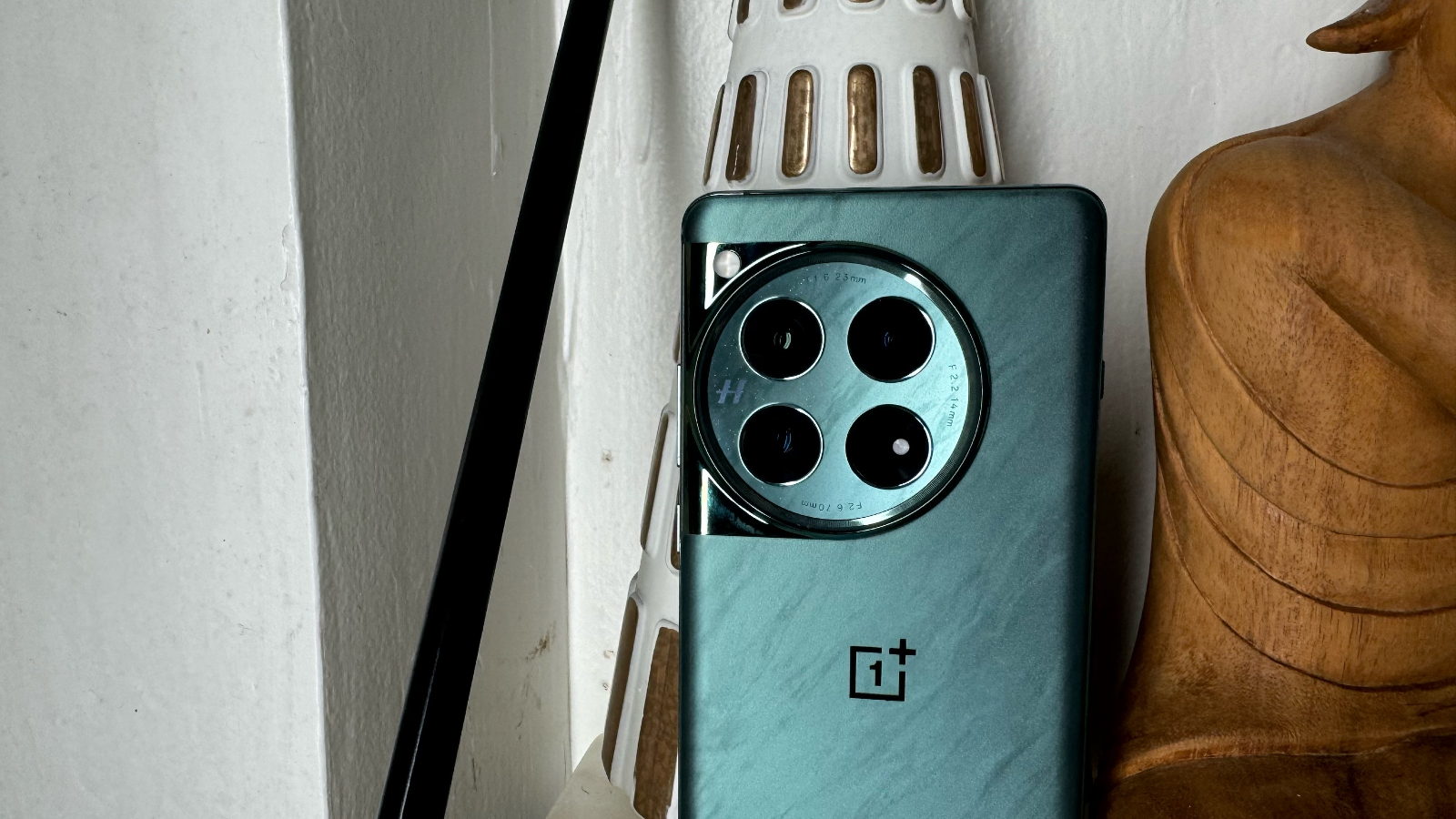
The ultrawide camera is 48MP with a 114-degree field of view and an aperture of f/2.2, performing well under the right lighting conditions and in many lower-light situations. The 64MP periscope camera delivered some excellent moments of zoom photography, especially when just using it up to its natural 6x. I did try out the digital zoom capabilities, which allow for 120x magnification.
Each of the three cameras produced excellent images in all lighting conditions, and the 32MP selfie cam has also improved and shoots excellent photos, once again, even in low-light conditions. Of course, you can also shoot video in 4K at 30fps and 60fps, and even in 8K at 30fps, but why eat up all that storage? 4k is more than enough. The videos were excellent, with the autofocus and built-in stabilization, in particular, working wonderfully.
OnePlus 12 performance and graphics
Our OnePlus 12 review unit features the latest Snapdragon 8 Gen 3 processor, 16GB of RAM, and 512GB of storage, which places it in the range of the higher-priced flagship Android phones. I often wonder how OnePlus continues to land in the flagship market while keeping prices more affordable.
The 12 never fluttered, faltered, or appeared overwhelmed with anything I threw at it. I popped open about 35 Google Chrome tabs and a Disney Plus video playing in the background, all while bouncing around apps like Instagram, Facebook, and Twitter. Qualcomm’s Snapdragon was more than up to the task, as the 12 remained super responsive throughout.
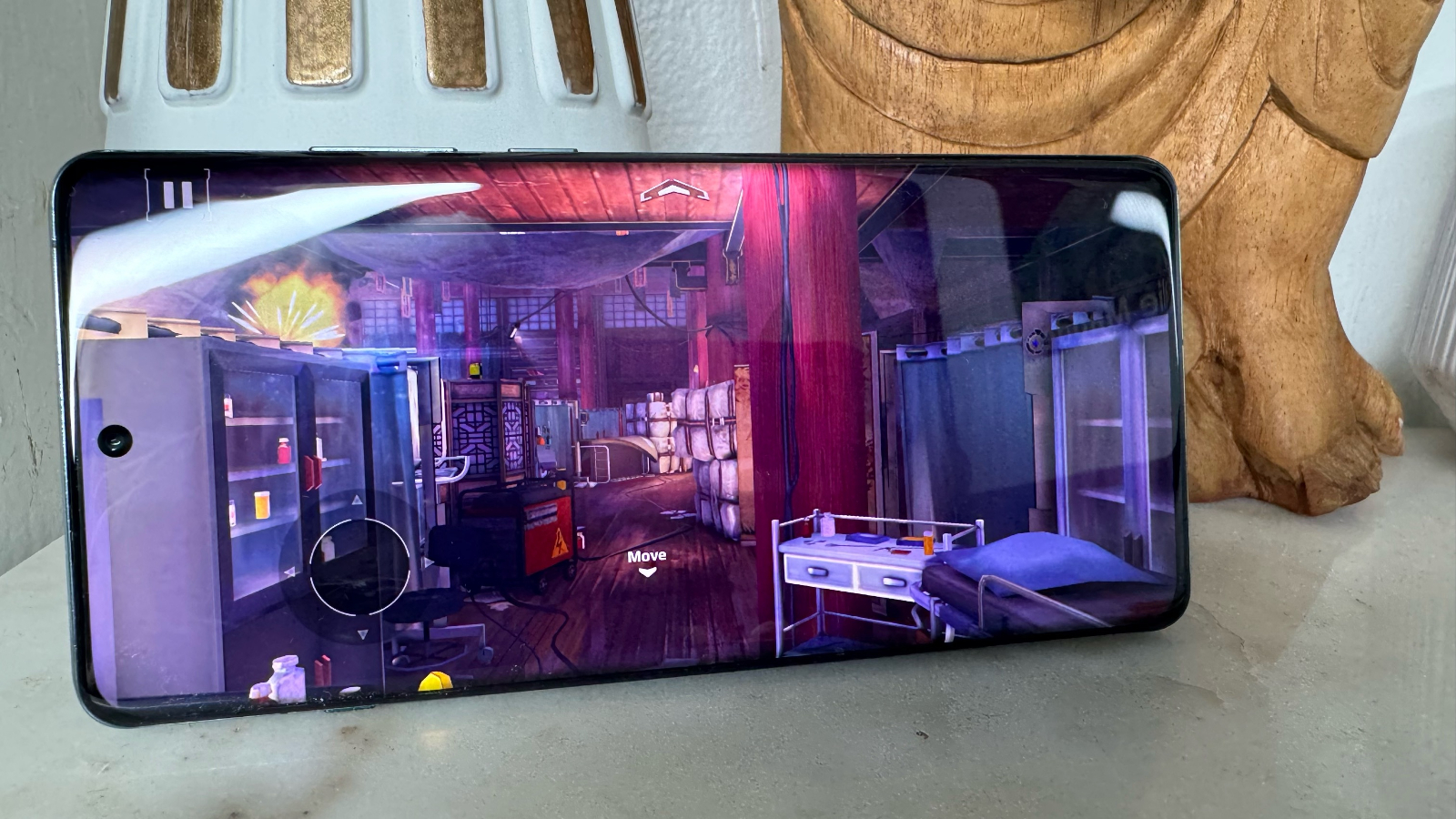
This year, OnePlus unveiled its Trinity Engine, which aims to provide a consistent, fast, and smooth experience in heavy-duty, multi-tasking, and long-term usage scenarios. I found the unit performed speedily regardless of what I threw at it. The CPU, RAM, GPU, and NPU have all been optimized, and it shows.
Sadly, as mentioned before, I don’t have test scores, but I will do my full review later this week.
Ultimately, the OnePlus 12, with its Snapdragon 8 Gen 3, will likely perform on par with the Samsung and other Android variants that will use the chipset.
OnePlus 12 battery life and charging
OnePlus is known for pushing the limits of fast charging, and they’ve done it again. The OnePlus 12 has a 5,4000 mAh battery that supports up to 100W SUPERVOOC charging and 50W AIRVOOC wireless charging. That’s right, wireless charging is back and better than ever. Also, you can use the OP 12 to reverse charge your other devices at 10W wirelessly.
On average, it took me around 20 to 25 minutes to recharge the OP 12 while plugged into a USB-C charger with the battery fully depleted. Wireless charging took a bit longer, with my only timed observance taking about 50 minutes. On average, I got a full day's plus use without charging the OP 12.
OnePlus 12 software
The 12 arrives with OxygenOS 14, a lightly-skinned version of Android 14. It is one of my favorite Android skins. The UI is user-friendly, with OxygenOS 14 featuring an “Aquamorphic” design that tends to create a more soothing and tranquil user experience. All while keeping users’ favorite features such as Work-Life Balance, the improved Smart Launcher, a Sidebar Toolbox, Faster Bluetooth pairing, Spatial Audio, and Private Safe 2.0 to secure users' data further close to hand.
Bottom line
You can get a flagship-level phone at just $799 for specs that are very similar to the Samsung S24 at the same price. For $100 more, you get more storage and RAM to land more on par with the S24 Plus at $899. In some aspects, you get even better specs and quality.
During my time with the OnePlus 12, I enjoyed its performance, elegant style, and durable design (I may have accidentally drop-tested it several times). The camera module is absolutely in my top five for image quality and performance. Want to game? The OnePlus 12 has your back again, offering speedy frame rates and excellent gameplay. If you want to enjoy a flagship experience device, I highly recommend the OnePlus 12 — you can thank me for saving you $400 later.







